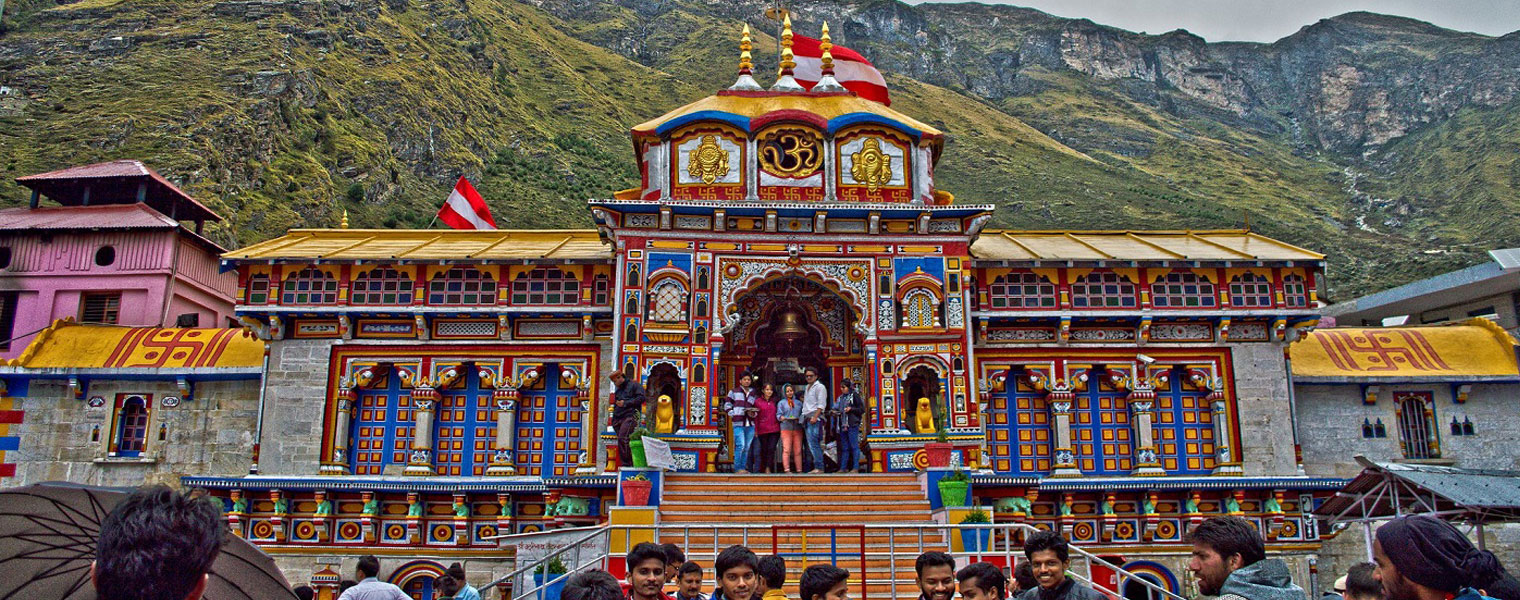
Badrinath Temple and its significance
Badrinath is located in Uttrakhand state of India. It is also known as Badrinarayan Temple. The temple is located in the hilly areas of Uttrakhand along the Alaknanda River. The Badrinath Temple is dedicated to Lord Vishnu and is one amongst the four Real Chardham pilgrimage sites. The temple is located in Himalayan regions and this makes the temple open for only 6 months due to extreme weather conditions. The temple is open during the months of April and November. The temple features many murtis and the most prominent being one meter tall statue of Vishnu as Lord Badrinarayan. The statue is made of Black Silgram stone. The murti of Lord Badrinarayan is considered to be one of the eight swayam vyakta kshetras i.e. self-manifested statues of Lord Vishnu. The murti depicts the meditative posture of Vishnu. During the month of November the town of Badrinath is closed for pilgrimages due to extreme weather conditions. The image of Lord Vishnu is then moved to the nearby Jyotirmath.
The Temple is around 50 Ft tall and adorns a cupola on top. The roofs are covered with sheet of Gold. The walls are built with stones and a long stairway heads to a large gate which is the main entrance of the Temple. The temple resembles to the Buddhist Vihara in architecture. The walls inside are decorated with intricate carvings. A Mandapa is built inside the temple and a pillared hall leads to the Shrine area. The shrine area features a black stone image of Lord Badrinarayan residing under a gold canopy, under a Badri Tree. Narsimha, Ganesha Uddhava, Garuda, Kuber, Nara and Narayana and Navdurga murtis are also worshiped within the temple. Sweets are offered in the temple and Tulsi and dry fruits are typical Prasad offered at Badrinath Temple. A hot sulphur spring also flows below the temple and is considered to be medicinal. Many Pilgrims take a bath in the hot spring before visiting the temple, it is considered as a holy ritual. The springs maintain a temperature of 45 Degree temperature round the year. It is said that Dhanu, Mesh and Simha Rashi people should once in lifetime visit this place.
History of Badrinath Temple
Adi Shankaracharya established Badrinath Temple as a Pilgrimage site in the ninth century. Shankaracharya discovered the image of Lord Badrinarayan in the stream of river Alaknanda. He consecrated the image above the near the Hot sulphur spring, Tapt Kund. It was in sixteenth century when the King of Garhwal moved the image to its present location.
Due to the extreme weather conditions, Badrinath Temple has undergone many changes.. The renovation was undertaken by the then King of Garhwal. The King of Jaipur rebuilt the temple after the devastating earth quake of 1803 in Himalayas. Badrinath is one of the five Punyakshetras for Hindus amongst Kashi in Varanasi, Gaya and Prayag in Allahabad and Rameshwaram in South India.
Legend associated with Badrinath
There are many legends associated with Badrinath mentioned in Vedic Text books. The most prominent legend explains us
the reason behind the ‘Sitting in Padmasna’ image of Lord Vishnu. The myth says, Lord Vishnu was caught massaging his partner Mata Lakshmi’s feet and was sentenced to perform austerity. Badrinath was the place he meditated at for long time. This myth has made Badrinath, a desired place for yogi’s to perform Meditation. There many such legends associated with the sacred Badrinath Temple.
Nambudiri Tradition of Badrinath Temple
The head priest or Rawal in Badrinath Temple is traditionally a Nambudiri Brahman from the far South of India in Kerala. BabaThe traditional started from the time of Adi Shankara. Adi Shankara was a great philosopher from Southern India. A Garhwali Dimri Pundit assists the Rawal. The Dimri Pundit belongs to the Dimmer village. The Rawal is selected by the rulers of Garhwal and Travancore and is given respectable status by Garhwal Rifles and the government of Uttrakhand and Uttar Pradesh. The Rawal performs his duties for Six months a year and can either visit Jyotirmath or can return back to his home village. The duty of Rawal commences early in the morning at 4am with the Abhishekam. Rawal is a Braham Chari and is not supposed to cross till Vamana Dwadasi. The Tantra Vidhi from Shraut tradition of South India is followed in Badrinath Temple. There are many famous religious muths at Badrinath viz Kanchi Muth, Jeeyar Muth, Sringeri Muth, Manthralayam Sri Raghavendra Swami Muth and Udupi Pejavar Muth.
Panch Badri – Holy Shrines devoted to Lord Vishnu
Badrinath is considered among five holy shrines in India known as Panch Badri. Panch Badri is solely dedicated to Lord Vishnu.
Vishal Badri: Badrinath Temple is known as Vishal Badri. The temple features many murtis and the most prominent being one meter tall statue of Vishnu as Lord Badrinarayan. The statue is made of Black Silgram stone.
Yogadhyan Badri: It is located in Padukeshwar and also features an image of Lord Badrinath in meditation pose. The legend says that king Pandu established a statue named Yoga Dhyan Bhadri.
Bhavishya Bhadri: Bhavishya Bhadri is located at a distance of 17 Km from Jyotirmath at Subain. Legend says that when the evil will rise over the world, Badrinath will not be accessible then. Lord Badrinath will appear at the Bhavishya Badri Temple. This is the future prediction or Bhavishya Badri.
Vridha Badri: It is located at a distance of 7 Km from Jyotirmath in Animath. Vridha Badri stands for ‘Old Badri’ and legend says that Vridha Badri is where the Badrinath image was formerly worshipped.
Adi Badri: Located at a distance of 7 Km from Karanprayag, Adi Badri is a temple which comprise of sixteen other temples in it. The temple has great carvings and adorns a three feet tall statue of Lord Vishnu.
If you are planning to visit Badrinath Temple, the following destinations might be of your interest